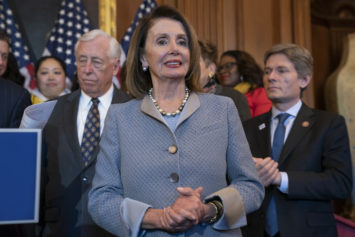
While the experts point to the bad winter weather as the cause, the news still had economists scrambling to reassure the public that the 1.0 percent retraction in the gross domestic product doesn’t spell impending doom.
“For those worried about a recession, it’s worth remembering that employment increased by nearly 300,000 in April,” economist Paul Ashworth of Capital Economics pointed out in a research note, according to USA Today. “Those numbers point to a recovery gathering some real momentum at last.”
The numbers for the first quarter initially showed a GDP expansion at a 0.1 percent rate, but as the government got more information the Commerce Department revised its numbers to reveal a drop.
It was the worst performance for the GDP since the first quarter of 2011. Experts also pegged the shrinkage to a far slower pace of inventory accumulation and a bigger than previously estimated trade deficit.
The shrinkage was also sharper than the predictions of the Wall Street experts, who had expected the revision to show GDP contracting at a 0.5 percent rate.
Because the economy grew at a 2.6 percent pace in the fourth quarter of 2013, you can expect most financial markets in the U.S. to dismiss the numbers as a temporary anomaly linked to Mother Nature. By some estimates, the bad weather could have cost the GDP as much as 1.5 percentage points.
The dropoff in inventory was a big factor in the numbers as well. While inventories were estimated at $87.4 billion last month, the actual number was $49 billion—a huge difference. But the experts expect inventory to make a big comeback in the second quarter as businesses stock up.
The rise of 3.1 percent in consumer spending in the first quarter was a big reason economists aren’t worried, as consumer spending accounts for approximately two-thirds of U.S. economic activity.
The Affordable Healthcare Act, also known as Obamacare, prompted a boost in spending as more Americans paid for expanded healthcare coverage.

